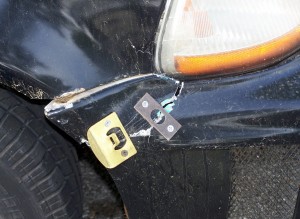This affray did not happen in Texas, but in New Mexico in 1884. It did have all the classic Western elements; rowdy cowboys, a small town fed to the back teeth with their destructive and abusive antics, and a single local lawman determined to uphold the rule of law and order. Here, however, ends any resemblance to High Noon, Tombstone, Stagecoach, Shane or any other classic Western movie. In this case, the single resolute lawman stands out in the annals of Western law enforcement for several reasons; first for sheer, stubborn crazy-brave courage, secondly for being barely 19 years old at the time, a tough little banty-rooster of a guy barely five-seven in boots… and thirdly for being native Hispanic in a time and in a place where anti-Mexican bigotry fell very severely on the non-Anglo population of any class or income.
His name was Elfego Baca and there was one more difference to him. Although he had been born in Socorro, New Mexico Territory, he had spent most of his early life in Topeka, Kansas, where his parents had sought work and an education for their children. This resulted in Elfego Baca being more fluent in English than Spanish at the time of his returning to Socorro and working as a clerk in a general mercantile owned by his brother-in-law. He had another notable skill; facility with a six-gun. Very much later in life he claimed he had been taught to shoot by Billy the Kid … either William McCarty-Antrim-Bonny or some other adolescent shootist with the same moniker in New Mexico Territory around that time.
